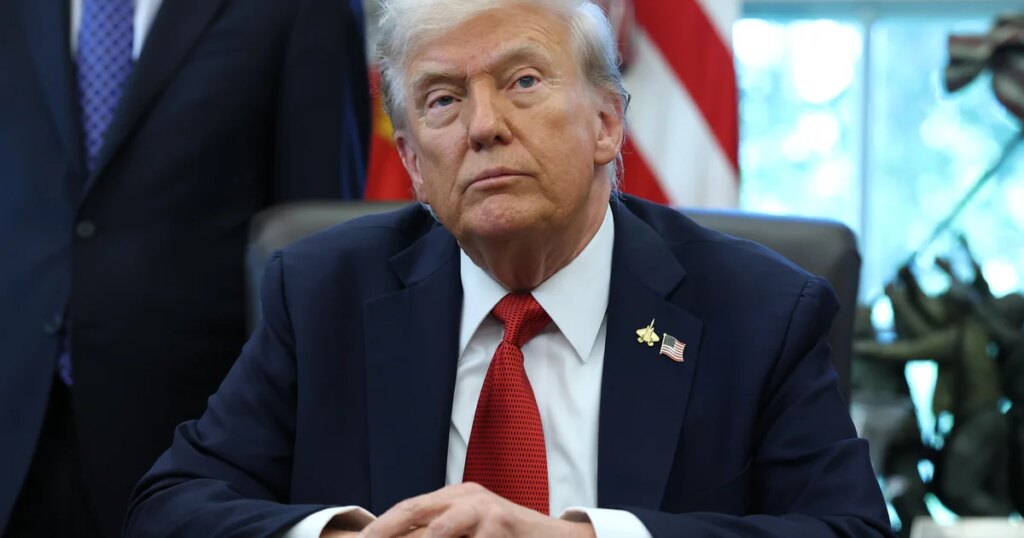In a significant move to bolster domestic manufacturing, President Trump announced new tariffs on imported medium- and heavy-duty trucks, as well as buses and their components. The proclamation, signed recently, imposes a 25% tariff on all medium- and heavy-duty truck imports, along with a 10% tariff on buses. This measure aims to protect American manufacturers from foreign competition while incentivizing local production.
| Article Subheadings |
|---|
| 1) Overview of the Tariff Announcement |
| 2) Details of the Tariff Structure |
| 3) Objectives Behind the Tariffs |
| 4) Impact on Domestic Manufacturers |
| 5) Future Projections and Industry Reactions |
Overview of the Tariff Announcement
The recent proclamation, signed by President Trump, outlines a new tariff regime aimed at imported medium- and heavy-duty trucks, along with the parts needed for manufacturing these vehicles. This strategic move comes as a response to what the administration sees as the need to protect American companies from foreign competitors. The tariffs will have significant implications for the automotive sector and international trade relations.
Details of the Tariff Structure
The tariffs imposed are two-fold, with a 25% charge applied to all medium- and heavy-duty truck imports and a 10% tariff on buses, which includes various types such as school and city buses. According to senior administration officials, this tariff encompasses all Class 3 to Class 8 vehicles. Additionally, manufacturers will be able to apply for a credit that allows for offsetting tariff costs if they bring in parts to assemble vehicles within the United States.
The administration’s communication indicates a flexible approach, understanding that not all vehicle components are domestically sourced. The aim is to ensure that domestic manufacturers can remain competitive while still complying with the new tariff structure. This credit system will depend on how much of the vehicle’s parts are imported versus manufactured locally.
Objectives Behind the Tariffs
The primary objective of these tariffs is to encourage the growth of domestic manufacturing in the automotive industry. By imposing tariffs on foreign imports, the Trump administration seeks to create a more favorable environment for American manufacturers. This measure is seen as a means of preventing the erosion of local jobs and ensuring that manufacturing remains a robust part of the U.S. economy.
Officials emphasized the importance of domestic production not only for economic growth but also for job creation. The administration believes that by promoting vehicle production within the U.S., it can significantly boost employment rates in the sector, offering American workers better wages and opportunities.
Impact on Domestic Manufacturers
Domestic manufacturers are expected to benefit substantially from the newly implemented tariffs. Officials have indicated that the tariffs will allow for a competitive edge as they provide a financial cushion in the form of credits for companies that continue to operate within U.S. borders. The program aims to support those automakers that prioritize local labor and materials in their production processes.
This initiative is likely to bolster the automotive industry by encouraging companies to expand their production capacities in the United States while creating more jobs for local workers. The administration believes that promoting local manufacturing will help stabilizing the industry in the long term, allowing for sustainable growth.
Future Projections and Industry Reactions
Industry experts have varied opinions regarding the long-term implications of the newly imposed tariffs. Some express optimism about the positive impact on domestic production and the potential for increased employment. However, there are concerns about the potential for retaliation from trading partners and the overall effect on prices for consumers.
Many in the automotive industry are closely monitoring developments, particularly how these tariffs will influence supply chains and costs. If foreign manufacturers respond with their counter-tariffs, it could significantly affect the prices of vehicles in the U.S. market. Overall, while the initiative aims to reinforce domestic manufacturing, the full effects of the tariffs will take time to unfold, requiring careful observation and consideration by stakeholders in the industry.
| No. | Key Points |
|---|---|
| 1 | President Trump signed a proclamation imposing tariffs on truck and bus imports. |
| 2 | The tariffs include a 25% charge on medium- and heavy-duty trucks and 10% on buses. |
| 3 | The structure allows credits for manufacturers importing parts to assemble vehicles in the U.S. |
| 4 | The initiative aims to strengthen domestic manufacturing and create more American jobs. |
| 5 | Industry experts express mixed feelings about potential price increases and international trade reactions. |
Summary
The imposition of tariffs on imported trucks and buses is a pivotal move aimed at supporting domestic manufacturing and securing jobs within the U.S. automotive industry. While the intent behind these tariffs is to create a competitive environment for American companies, the reactions from industry experts highlight potential challenges ahead. The success of this initiative will depend on its implementation and the responses from both domestic manufacturers and international trade partners.
Frequently Asked Questions
Question: What are the main components of the new tariffs announced by President Trump?
The new tariffs impose a 25% charge on imports of medium- and heavy-duty trucks and a 10% charge on imported buses.
Question: How do these tariffs aim to affect domestic manufacturing?
The tariffs are designed to protect U.S. manufacturers from foreign competition and incentivize local production, thus encouraging job growth in the industry.
Question: What credits are available for manufacturers affected by the tariffs?
Manufacturers importing parts for vehicles can apply for credits to offset the tariff costs associated with those imports, promoting domestic assembly.


